It’s the car everyone knows, now an indelible part of the American cultural fabric: the DeLorean DMC-12 coupe.
Its star turn in the 1985 Robert Zemeckis movie, “Back to The Future” starring Michael J. Fox enshrined it as an icon of the 1980s. And the company that built the car, DeLorean Motor Co., was established this week in 1975. And its beginning starts with an ending.
Walking away from General Motors
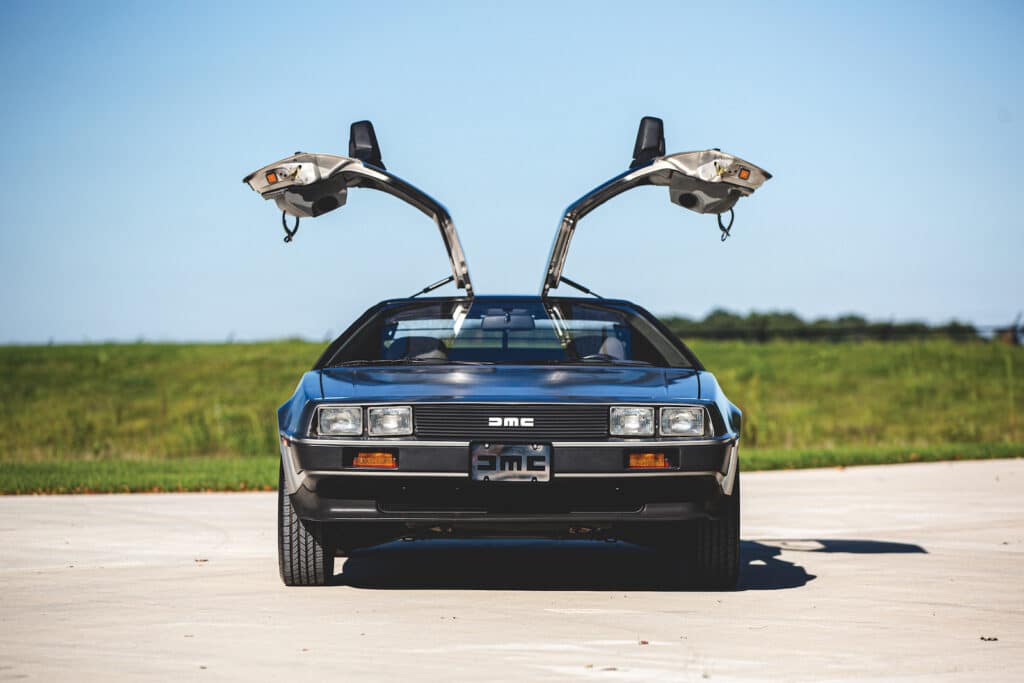
April Fools Day, 1973; John DeLorean arrives at New York’s Waldorf Towers feeling numb.
“In less than 17 years, I had risen from being a greenhorn engineer at the Pontiac Division to an office on the prestigious Fourteenth Floor in General Motors’ World Headquarters in midtown Detroit,” DeLorean wrote in his book, “On A Clear Day You Can See General Motors.” “At 48, there are a better than even-odds chance of one day being President. But I was about to toss all that away.”
Sitting in his room that Sunday night, DeLorean was acting on a feeling that had come to him gradually: the thought that innovation at General Motors had long since stopped. What the company was selling consumers was the same old thing.
“There was no reason for them to change from one model to the next, except for the new wrinkles in the sheet metal, which to me wasn’t sufficient,” he recalled.
The next day, he went to the General Motors Building at 59th and Fifth Avenue in New York City, entered the 24th-floor office of GM Chairman Richard C. Gerstenberg, and handed in his resignation. The meeting lasted 20 minutes, after which DeLorean wasn’t in the car business for the first time in 25 years. But it wouldn’t stay that way for long.
A new life and a new car
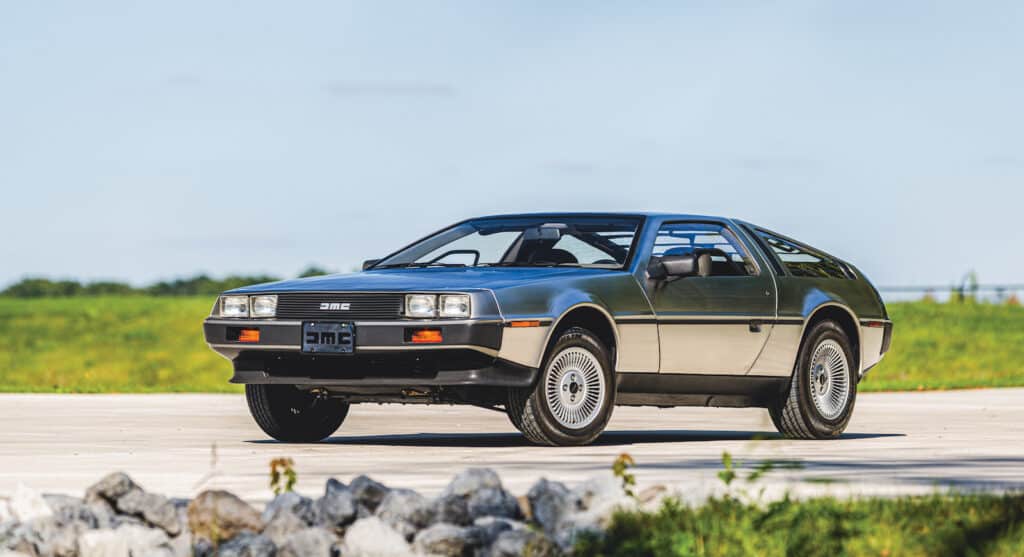
A GM maverick at a time when conformity was highly prized, DeLorean was always known for his relative flamboyance compared to most GM executives; he had dated Ursula Andress, Joey Heatherton and Tina Sinatra in the late ’60s. Now free of GM, the 48-year-old DeLorean married 28-year-old supermodel Cristina Ferrare in Los Angeles, and moved to New York City where he started his next venture: the DeLorean Motor Co.
After obtaining seed money from Bank of America, he began developing his car, tapping Italian designer Giorgetto Giugiaro to shape its look. Giugiaro had penned the Lotus Esprit and Ferrari 250 GT SWB Bertone sports cars, among many others. For DeLorean, he penned a wedge-shaped coupe based on the 1970 Porsche Tapiro concept car he had created, with a stainless-steel body and gullwing doors.
Underneath the wedge-shaped, stainless-steel skin, DeLorean proposed a mid-engine car built using a fiberglass chassis, and sought the assistance of Colin Chapman, the founder of Lotus Cars. What evolved was a rear-engine car with a conventional chassis developed by former Pontiac colleague Bill Collins, who was part of the development team of the wildly successful Pontiac GTO.
Power came from a 2.9-liter V-6 engine developed for use by Peugeot, Renault and Volvo. Mated to a 5-speed manual or a 3-speed automatic transmission, it generated 130 horsepower and returned 22 mpg according to contemporary accounts. That’s about the same as a diesel-powered 1981 Cadillac Brougham.
Financial pressure mounts
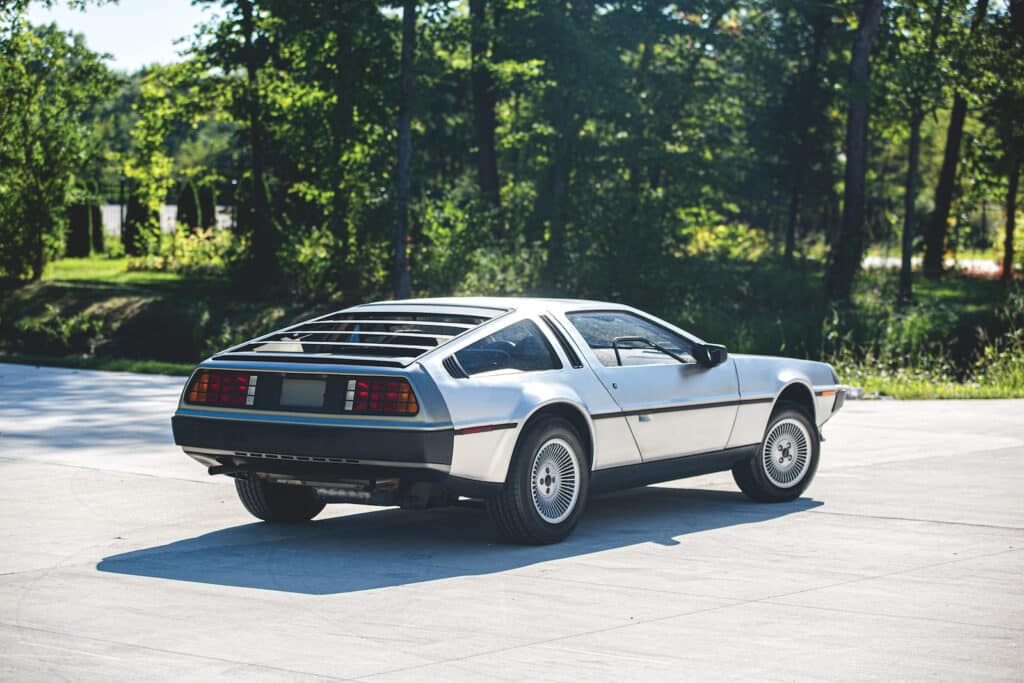
As the prototype was developed, DeLorean was deciding on where to build it. Before reaching a tentative agreement with the U.S. Department of Commerce and the government of Puerto Rico to develop a plant on a former Air Force base, he courted officials from Pennsylvania, Ohio, Michigan, Canada, and Spain.
The Puerto Rico deal included a 90% tax exemption for 15 years with possible renewals in exchange for the 2,000 jobs, $20 million payroll and 3,000 related jobs the plant would produce.
All seemed set until DeLorean received another offer, this one from the British government offering $100 million in British government loans to build a factory in Dunmurry, Northern Ireland near Belfast in the heart of Northern Ireland. Despite the violent sectarian conflict occuring there, DeLorean chose Northern Ireland. But financial pressures loomed.
“Once the project had come to Northern Ireland, it was quite clear that we were going to run out of money the day we produced the first car,” says Barrie Wills, DMC’s director of purchasing and supply at the time told Forbes magazine.
The arrival of the DMC-12
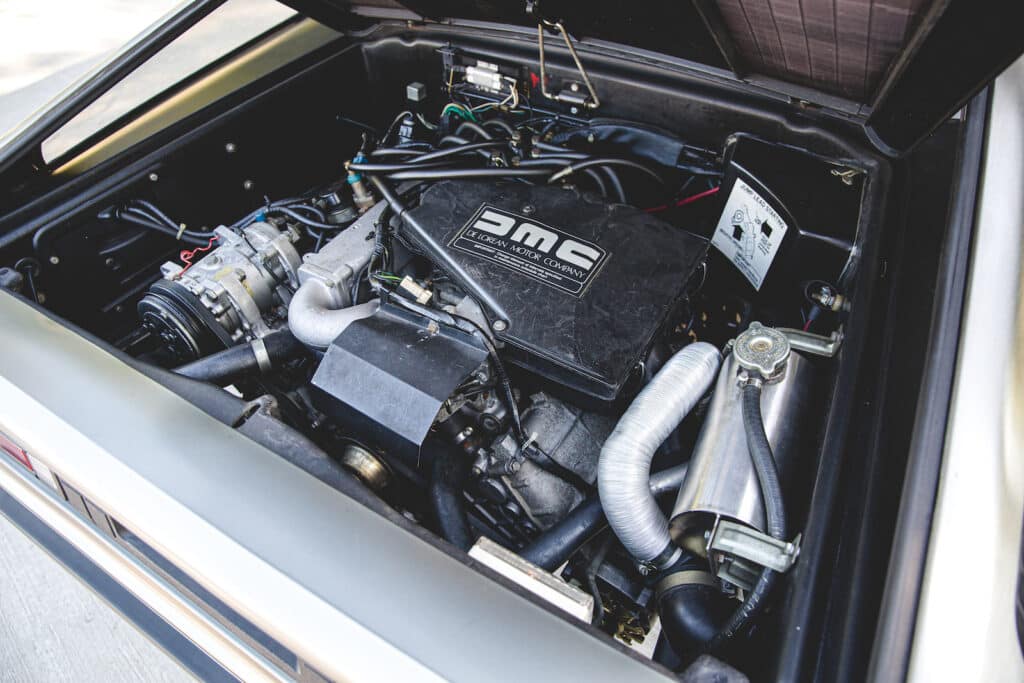
Production was expected to begin in 1979, but engineering delays and budget overruns would delay it until 1981. DeLorean wanted the car to be sold for $12,000, which is why it’s called the DMC-12. It ended up selling for $25,000, rising to $29,825 in 1982 and $34,000 in 1983.
That put it up against the faster Chevrolet Corvette and close to that of the more luxurious Mercedes-Benz SL by 1983. An even-pricier version appeared in the 1980 American Express Christmas catalog, which advertised a DeLorean plated in 24-karat gold for $85,000. Seven people put down deposits.
Nevertheless, when the DMC-12 did arrive, the automotive media approved.
“Giugiaro’s rounded-doorstop sculpture looks magnificent in the flesh, and the machinery is good enough to spark a fiery love affair after one quick drive around the block. The DeLorean is not a hard-edged answer to the 911 Porsche, nor is it another fatuous Corvette-clone,” wrote Don Sherman, in his initial review of the car in 1981.
“The handling is safe and satisfying, the V-6 engine surprisingly mellow in its newest assignment. The interior is roomy, comfortable, and reasonably well thought out. Most important, the DeLorean passes the critical enthusiast’s test: it’s fun to drive.”
The pressure that never subsided
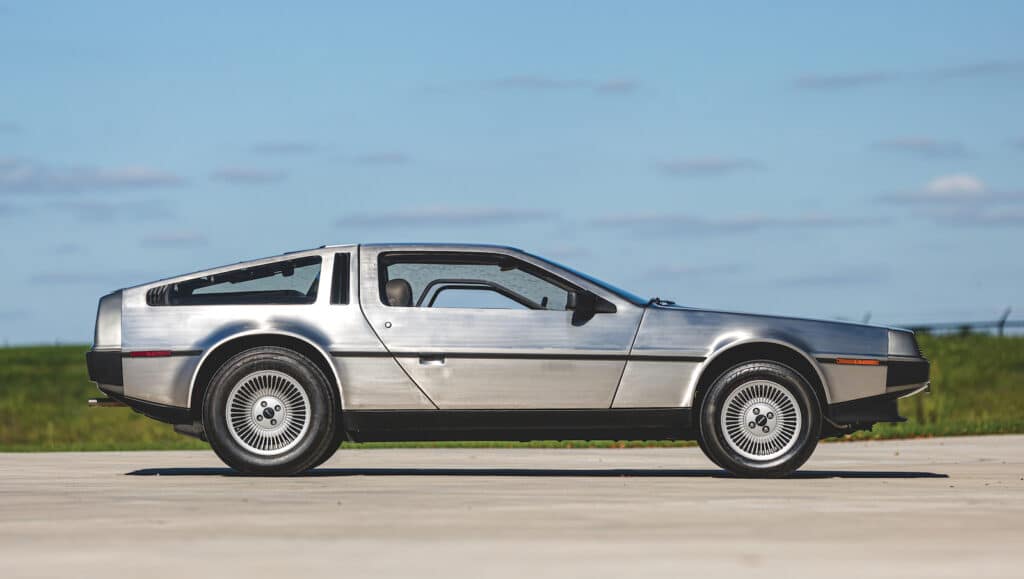
But money problems persisted. Building the cars in Ireland led to a three-week delay until they reached the United States. And a poor exchange rate cost the company dearly.
A plan to go public would have raised a much-needed $120 million, but England’s prime minister wouldn’t hear of it. They had been given $100 million, and wouldn’t be given any more. Nor would the government allow them to go public. Within a year of starting production, the company was in trouble.
By October 1982, the money problem had grown so bad, John DeLorean was detained after agreeing to fund a fictitious cocaine smuggling operation in the hopes that it would bring in more money for his business. DMC entered into bankruptcy a week later. Production lasted ended in 1983 after approximately 9,000 cars were built.
DeLorean would be acquitted of charges two years later, but would never return to the car business. DeLorean would be forced to sell his nearly 500-acre New Jersey estate. Purchased by Donald Trump, it’s now a Trump National Golf Club. His wife divorced him, taking their children with her. DeLorean ended up living in a one-bedroom apartment in Bedminster with his fourth wife, Sally. He died on March 19, 1980, at age 80.
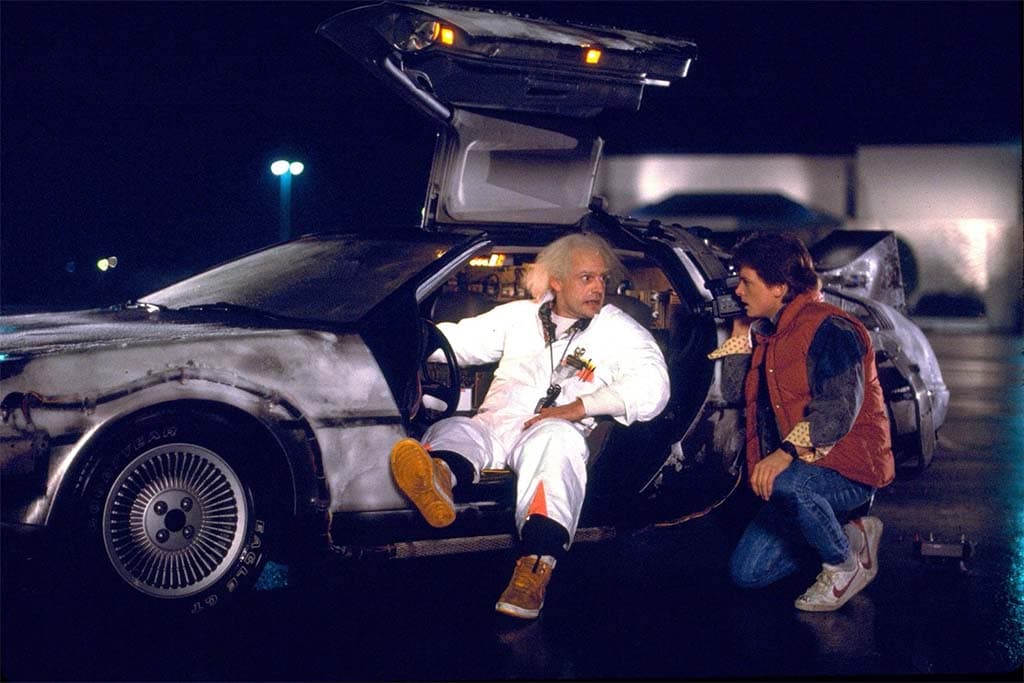
The car that will not die
Yet even as DeLorean’s star faded, his car didn’t. Director Roger Zemeckis’s 1985 film, “Back to the Future,” starring Michael J. Fox as a teenager who travels back in time using a using a plutonium-powered DeLorean, reignited interest in the car. This proved fortunate for the revived DeLorean Motor Co.
Formed in Ohio from the remnants of the failed automaker, the firm sold leftover DeLoreans, and boasted a stockpile of 4 million original parts left from cars that were never built.
More than a decade later, a Texas-based business run by Stephen Wynne, a Liverpool-born mechanic specializing in DeLoreans purchased the name’s rights as well as a sizable percentage of DMC’s spare parts and tooling in 1995 and began restoring DeLoreans. They also sold other branded goods.
The name of the business? DeLorean Motor Co.
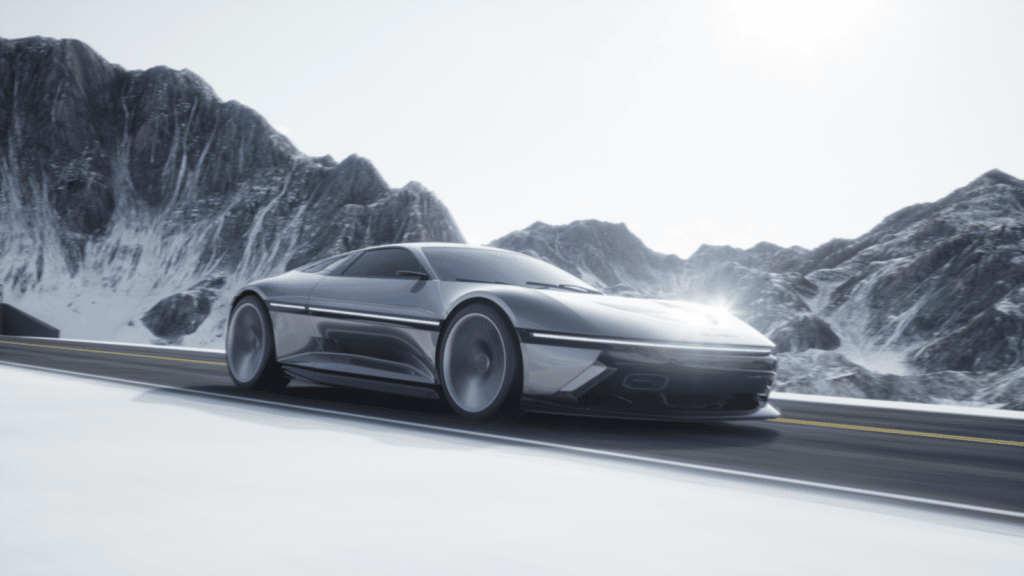
John DeLorean’s heirs sued, and after years of legal wrangling, came to an agreement this year, clearing the way for the car to return to production sometime in the future using an all-electric powertrain and dubbed the Alpha 5.
But the feud is far from finished.
Kat DeLorean, John DeLorean’s daughter, posted on her Instragram account that DeLorean Motor Co. is “not John DeLorean’s Company. DMC is not 40 years old, and not associated with the DeLorean Family, or my father’s ongoing legacy. Please stop lying and stop speaking about John now, he despised you.”
This appears as DeLorean Next Generation Motors announced that “Kat DeLorean, daughter of legendary automotive engineer John DeLorean is following in her father’s footsteps by building a new sports car. This historic endeavor will be filled with some of the top automotive minds in the industry, alongside a portion of the original team that helped create the first iconic DeLorean more than 40 years ago.”
Named the Model-JZD in honor of John Zachary DeLorean, is expected to be unveiled by the end of 2023 and will be buillt in Detroit.
